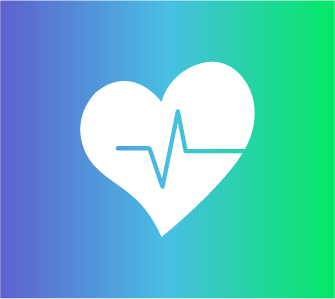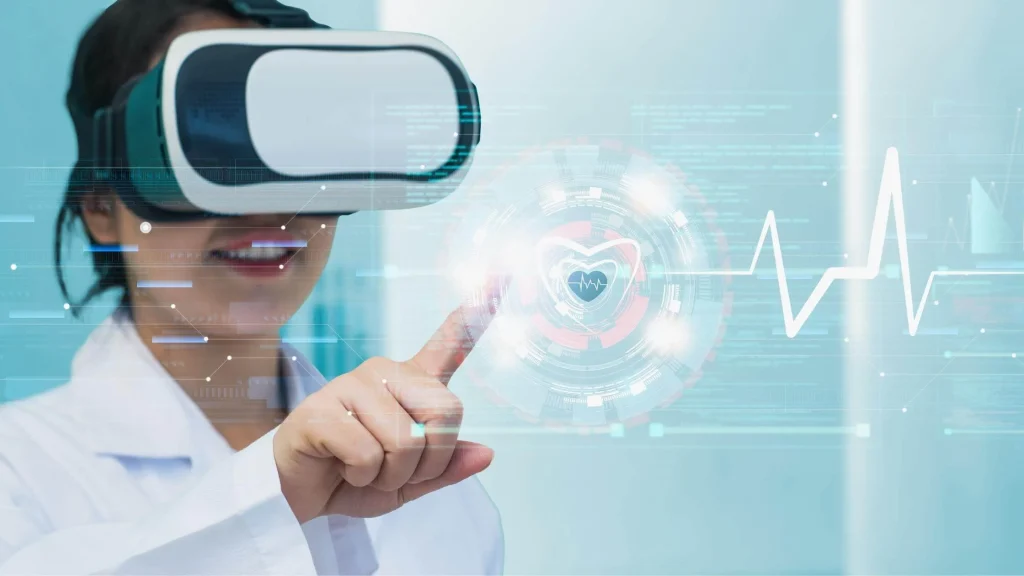If the first thing you think about when you hear “augmented or virtual technology” is video games, you’re not alone. Virtual reality (VR) and augmented reality (AR) are both reasonably new to the world of leisure — even though this technology has been around for a while, it has greatly expanded within the last decade. With this in mind, how can augmented and virtual reality benefit healthcare?
AR and VR in healthcare might sound odd, but they’re both an exciting wave of new tech that will help patients, doctors, and med students alike. Everything from surgery to general anatomy training can be achieved through AR and VR, and you’re likely to see both in some aspects of your practice or hospital sooner than you think!
What are augmented reality and virtual reality?
Augmented reality and virtual reality are two ways of using tech to interface with the real world. At this point, they are primarily methods of entertainment or, for example, to make exercise more fun.
AR is an overlay to the real world that is accessed most commonly through smartphones. Think PokemonGo or other such apps that use your phone’s camera to add virtual assets to the world around you. For instance, AR with PokemonGo adds digital Pokemon to your GPS map and screen when you point your camera at a spot on the surrounding ground. The creature isn’t there, but you can interact with it in real-time through your camera.
Virtual reality is an entire system that allows you to perceive the world around you in a new reality. In most cases, it takes the form of fully immersive games that you play with your entire body. Think of running, but the VR interface makes it feel like you’re running on the moon — the process is designed to make the exercise more exciting and fun.
These technologies are great recreation devices, but how do they affect healthcare?
AR and VR in healthcare
Both AR and VR have tremendous roles in modern and future medicine. From patient treatment to surgery and education, you will soon find AR and VR at the forefront of medicine.
AR and VR in patient care
Virtual reality is already used to some degree in robotic surgery. Thanks to VR interfacing, remote surgery with highly precise robotic movement can help a skilled surgeon perform delicate surgery without actually being in the room. Additionally, VR immersion tech can help PTSD or other psychiatric patients face their fears in a completely harmless way through exposure therapy. The tech can help with remotely talking with a therapist, creating a calming atmosphere akin to a doctor’s office but in the comfort of your own home.
AR and VR can help train students without the concern of causing life-threatening errors and without the need for cadavers. Using VR to practice a routine surgery over and over will help increase the degree of mastery students have and improve their confidence, which improves patient outcomes.
Augmented reality is already at work in your GPS navigation apps. By showing you where medical treatment facilities are in relation to your current location, Google Maps and other such apps can help you find the best way to get emergency care when you need it most. AR can help you find pharmacies and other medical businesses clearly on your GPS map.
VR is hugely beneficial for anxiety or panic disorder patients, allowing them the virtual space to calm down and relax when they’re overwhelmed during a panic attack. This benefit exists now, as long as your patients have access to VR technology, which is becoming increasingly affordable and accessible with Oculus, Google Cardboard, and more.
Be ready for the AR and VR revolution
Tech in medicine is increasing faster than ever before, and soon VR and AR will be used in physician’s offices across the country. A powerful telehealth partner can help you transition to using these assets while providing support and guidance. ViTel’s telehealth platform is robust, HIPAA-compliant, and highly effective at improving your life through digital medical support.
Telehealth will only continue to increase in popularity and efficacy, so being at the forefront with a platform you can trust is essential. Contact us today for a free demo and see what the future of medicine holds for you and your patients.







